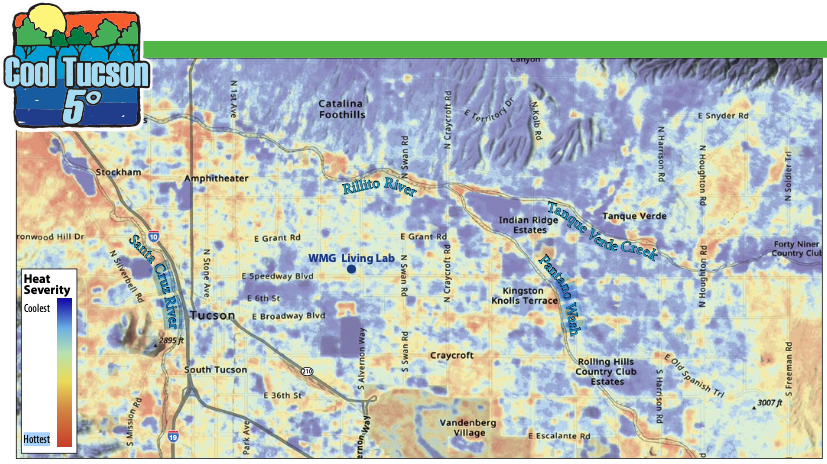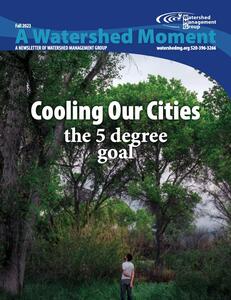 This Summer Was Too Hot
This Summer Was Too Hot
How Do We Cool Our Cities by 5 Degrees?
I’m cooking up a plan to invite my siblings to retire in Tucson in 20 years. They live all over the U.S., and I like to daydream about us all living in the same place. I mentioned that scheme to one of WMG’s docents, and she immediately said, “If it’s not too hot.” That got me thinking, in addition to a sustainable water future being the biggest threat we face, unbearable heat is right behind that. And these two issues are related.
What is the outcome we are trying to achieve with planting trees and climate resilience strategies? Don't we all want to cool Tucson, in a measurable way? How much can we cool Tucson by? Our cities are warming from climate change, but our cities are experiencing even more warming due to the urban heat island effect. We need to address both. According to the EPA, in the United States the heat island effect results in daytime temperatures in urban areas about 1–7°F higher and nighttime temperatures about 2–5°F higher than temperatures in outlying areas.
For example, Tucson is 11 degrees warmer on average than it was 100 years ago. Half of that increase (5.5 degrees) is attributed to the urban heat island. Why? Our built environment absorbs the sun's heat and then re-releases the heat at night. Nature on the other hand mitigates the heat and cools temperatures. So let’s bring more nature back into the city, and fast!
I challenge our community to really move the needle on this problem, with a measurable goal we're all working towards. What about setting a goal of cooling our city by 5 degrees, directly reversing the urban heat island effect while mitigating climate change. With “cool infrastructure” like trees, green corridors, and nature-based solutions, research shows we can reduce our air temperatures by 5-7 degrees1.
To do this, we need less hot hardscape surfaces including pavement, car parking lots, gravel landscapes, and concreted and channelized drainages, creeks, and rivers. This is known as gray infrastructure, and it heats up our cities.
We need more trees, more urban forests, more flowing rivers with ample river floodplains filled with river forests, more native plants covering our landscapes, and more wood chip mulch. This is known as green infrastructure, and it cools down our cities.
Ultimately, this is a huge change in land use in our cities, and will also require us to shift from car-centric lifestyles to sustainable mobility. (see pg 6-9).
Like many revolutions, they start at the grassroots, so let's start this transformation at home and in our neighborhoods, where we have power to do so. I hope the rest of this newsletter gives you some tools to start your own 5 degree cooling journey.

